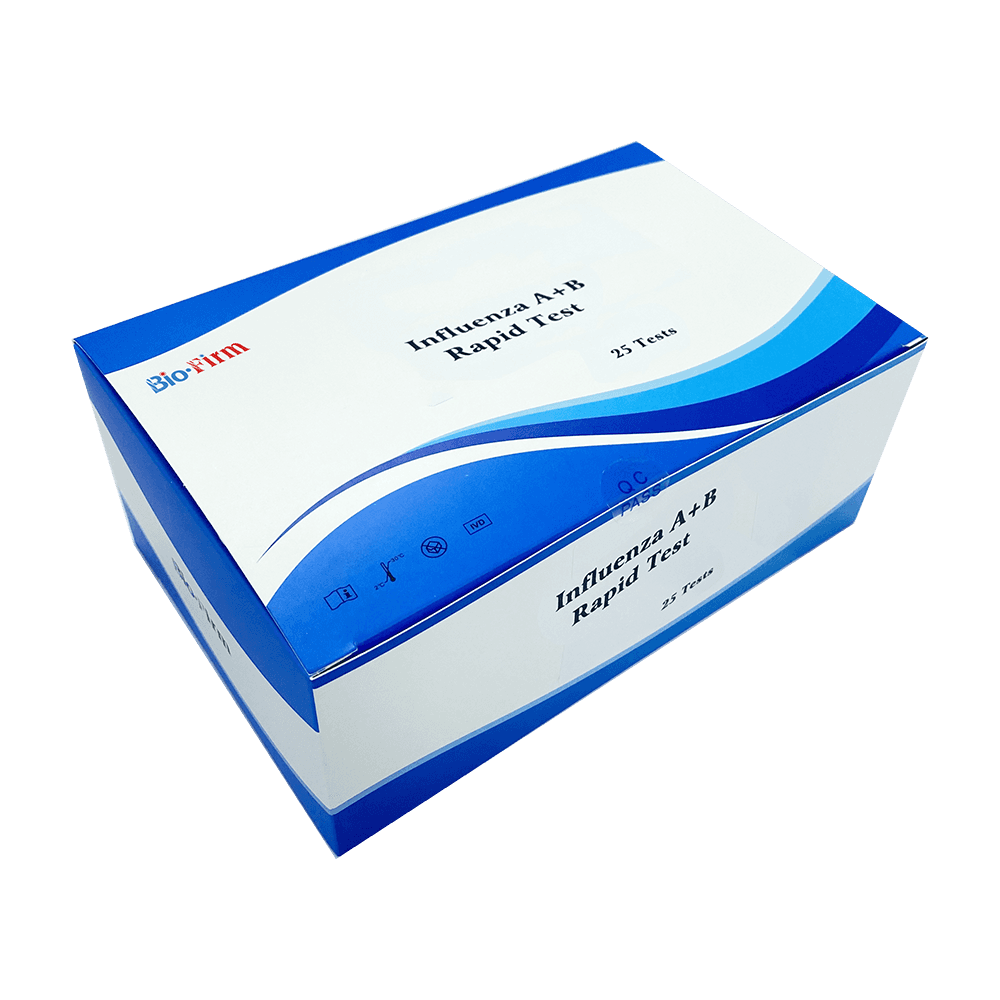Jul 01,2022
Improving the usability of Influenza A+B rapid tests for healthcare providers involves streamlining the design and workflow to enhance efficiency, accuracy, and user experience. Here are several strategies to ensure ease of use:
Simplifying Test Procedures
Clear Instructions for Use (IFU): Ensure that the test includes simple, easy-to-follow instructions that reduce the chance of user error. The use of visual guides, step-by-step illustrations, and QR codes linking to instructional videos can further aid healthcare providers in understanding the process.
Minimized Handling Steps: The fewer the steps required to perform the test, the better. Designing tests that are easy to set up and quick to process can save time, especially in high-volume settings like clinics or emergency rooms.
Pre-assembled Kits: Providing pre-assembled test kits that include all necessary components (swabs, reagents, buffers) can help ensure that healthcare providers don’t waste time searching for separate items or making mistakes during preparation.
Intuitive Test Design
Color-Coded Components: Incorporate color-coded or self-explanatory components (e.g., the test cassette and reagents) to ensure correct sample application, reagent mixing, and result interpretation. Clear markings or symbols can guide the user during each step.
One-Step Processing: Where possible, eliminate the need for multiple reagents or multiple processing steps. Tests that work with just one nasal or throat swab and involve no additional preparation steps will be more user-friendly.
Integrated Sample Collection: Design tests that incorporate a self-contained swab and reagent system to minimize the need for additional materials or equipment. This reduces the risk of mishandling or contamination and speeds up the process.
Improved Sample Collection and Handling
Easy Swab Collection: Use swabs that are easier for healthcare providers to use, such as soft-tipped swabs that can be used on both nasal and throat samples without causing discomfort or difficulty in obtaining sufficient sample material.
Clear Sample Indication: Ensure that there is a clear visual cue when a sufficient sample has been collected. For instance, a color change or saturation line on the swab or in the collection tube can help the provider confirm they have the right sample.
Faster Result Time
Quick Results: Design the test to provide results in 15 minutes or less, allowing healthcare providers to make timely decisions about patient care. A rapid test with a fast turnaround enhances the workflow in busy environments and reduces the wait time for patients.
Clear Result Interpretation: Provide results that are easy to read and interpret, such as a strong, clearly defined line indicating a positive result. Avoid ambiguous or faint lines that might lead to misinterpretation.

Compact, Portable, and Easy-to-Clean Design
Compact Packaging: The design should be compact and allow for easy storage in various clinical environments. It should fit neatly into portable kits for mobile clinics or rapid response units.
Durable and Lightweight: Design the test to be durable yet lightweight, ensuring that it can withstand handling in fast-paced environments. Healthcare workers often work in busy settings, and a sturdy test with minimal fragility is crucial.
Easy to Disinfect: Make the test device or kit easy to clean, especially for use in environments with strict infection control procedures. Materials should be resistant to common disinfectants used in healthcare settings.
Point-of-Care (POC) Integration
Integration with Electronic Health Records (EHR): Consider integrating the test with digital systems that allow healthcare providers to quickly upload test results to patient records. This reduces the manual data entry process and enhances data accuracy.
Digital Readout: Use digital readouts or interfaces (such as an integrated smartphone app or digital reader) to eliminate the need for manual result interpretation. Digital interfaces can ensure consistency in reading results, reducing human error.
Training and Support
Comprehensive Training Materials: Provide training resources, including video tutorials, on-site demonstrations, and support teams that can quickly address issues during the initial rollout of the tests. Ongoing education on test use, limitations, and result interpretation can be crucial.
Technical Support: Ensure that healthcare providers have access to technical support in case of difficulties. This can be provided through help desks, digital support tools, or online resources that are available 24/7.
Feedback and Continuous Improvement
User Feedback Integration: Continuously gather feedback from healthcare providers to identify any pain points, challenges, or areas for improvement in test usability. Incorporating this feedback into product design can help optimize performance and user experience over time.
Trial Runs: Before a full-scale rollout, conduct pilot trials with healthcare providers in different settings to assess the usability and efficiency of the rapid tests and make necessary adjustments.
Customization for Diverse Environments
Customizable Features: Develop test options that can be tailored to specific healthcare settings (e.g., emergency rooms, clinics, home testing). For instance, tests used in busy hospitals may require different handling features than those designed for home care or remote locations.
Multi-Language Support: Ensure that the instructions, labels, and training materials are available in multiple languages to cater to a diverse range of healthcare providers.



 Español
Español
 Français
Français
 Deutsch
Deutsch
 عربى
عربى








